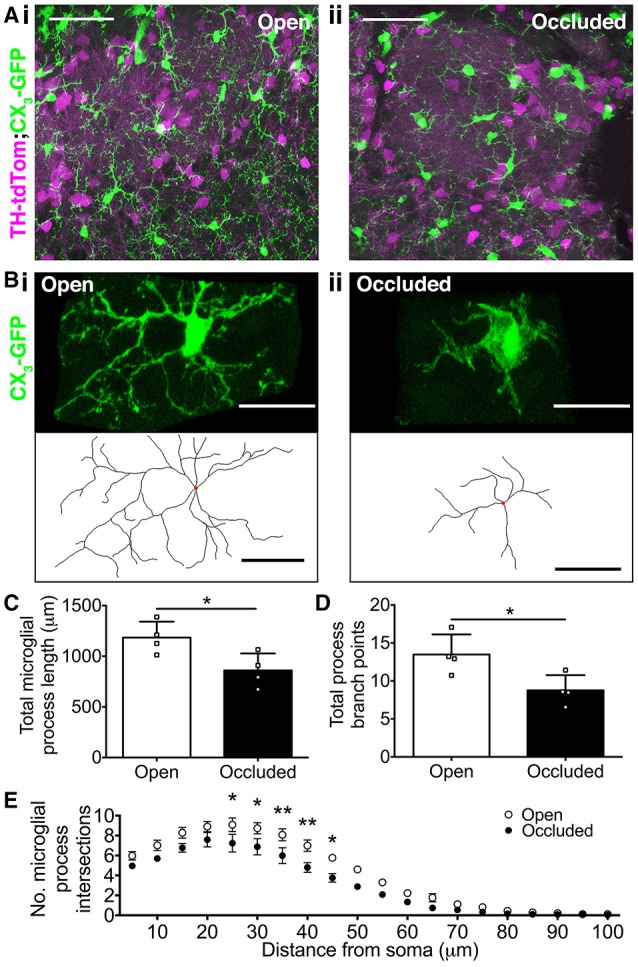Figure 4.

Loss of olfactory input drives changes in microglial morphology. (A,B) (i) More ramified microglial morphology in open OB vs. (ii) more amoeboid microglial morphology in occluded OB. (A) Scale bars: 50 μm. (B) Lower panels show reconstructions (red dots: somata). Scale bars: 20 μm. (C) Shorter process length in occluded OBs (*p = 0.031, t = 2.82, t-test). (D) Fewer process branch points in occluded OBs (*p = 0.029, t = 2.85, t-test). (E) Lower process complexity in occluded OBs [effect of occlusion, p < 0.001, F(1, 120) = 72.31; *p < 0.05; **p < 0.01 at particular radii from soma; two-way repeated measures ANOVA with Sidak's test]. (C–E): n = 4 pairs of open and occluded OBs from 4 naris-occluded mice. All comparisons are of mean values per OB. A total of 54 microglia in occluded OBs and 52 microglia in open OBs were reconstructed (7–18 microglia per OB).
